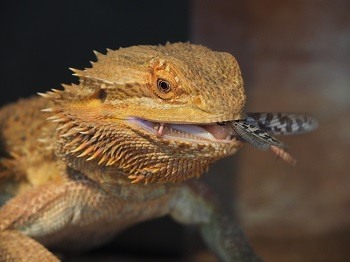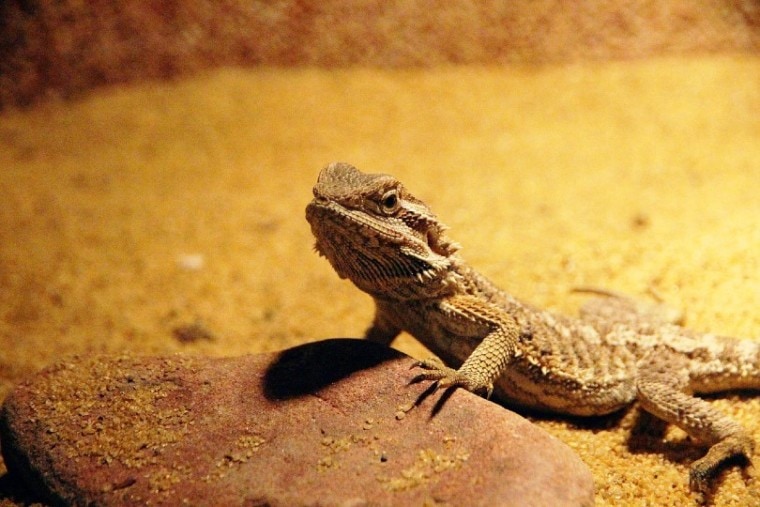
Bearded dragons are popular family pets among reptile enthusiasts. It’s hard not to fall in love with them, whether it’s watching them catch their bugs or their funny antics. Unlike most egg-laying animals, bearded dragons lay theirs in what we call a clutch.
The clutch basically means a cycle. So, how many eggs do bearded dragons lay per clutch, and at what intervals? Keep reading to find out.
 How Often Do Bearded Dragons Lay Eggs?
How Often Do Bearded Dragons Lay Eggs?
A female bearded dragon starts to lay eggs after the age of two years. She might begin laying as young as ten months, but the eggs won’t be viable. It might also be a health risk for the dragon.
She will lay eggs successfully between 2-4 years, which is ideal for most female beardies. Similar to younger dragons, too old beardies will not lay eggs. That’s because the process requires lots of energy, which both old and young beardies don’t have.
The average number of clutches that a bearded dragon will lay in one year is 3-4. The number of eggs per clutches differs from one dragon species to another. For instance, some female beardies may lay their eggs in just two clutches while others lay at equal intervals.
In each beardies ovary, there are two germinal beds. Both germinal remain active at the same time. That means when one is laying eggs, the other one is also active and preparing.
Moreover, female beardies can fertilize multiple germinal beds from a single mating. That means they don’t have to mate each time they want to lay eggs.
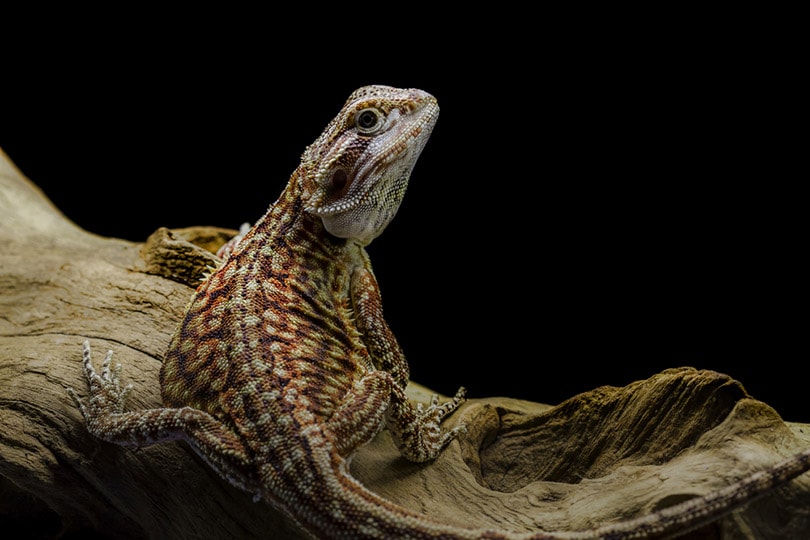
When Does a Bearded Dragon Start Laying Eggs?
A gravid dragon is one that is ready to lay eggs at the age of 2-4 years. She may lay infertile eggs or fertile ones, depending on whether she mated or not.
After mating, the female beardies can store the sperm for an entire year and reproduce fertile eggs throughout the cycles. The eggs double in size as the embryo grows.
Ensure you remove and dispose of all infertile eggs from the enclosure as early as possible to prevent health problem for the dragon.
How can you Tell If the Eggs are Fertile?
You can tell whether the eggs are fertile through a process called candling. Candling is where you shine a bright light through the egg to see the development inside. If you see reddish veins or a pink embryo, then it is fertile.
If you see a yellow tint or nothing at all, then the egg is infertile, and you can discard it. To check the fertility of the eggs, candle them one or two weeks after getting laid.
Moreover, like most other animals laying eggs varies from one beardie to another. However, your dragon may lay an average of 20 infertile eggs in a clutch during the mating season.
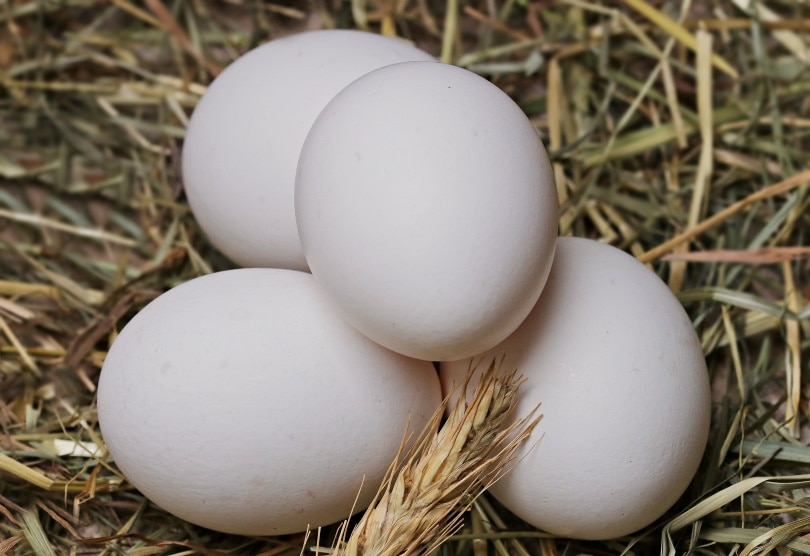
Factors Affecting How a Bearded Dragon Lays Eggs
The basic instinct of bearded dragons is to lay eggs either before or after winter. That means the environment and temperature will play an enormous role in how she lays eggs.
For instance, the dragon will not lay eggs when it is too cold in winter. In the early summer and springtime, she lays eggs more frequently because of the hot temperatures. The high temperature in the house triggers her hormones to lay fertile eggs.
Another factor that affects how often she lays eggs is hormone levels and resources in the body. For instance, if the female is in good condition and well-fed, she will produce fertile eggs quickly. To ensure she is healthy during the reproduction period, provide her with enough water, food, and supplements.
We can also control when our dragon lays eggs through temperature and lighting. If you want her to lay eggs in the early spring, make sure it’s warm in the enclosure. Also, check and maintain all essential husbandry practices, which include humidity and cleanness.
Preparing a Bearded Dragon to Lay Eggs
The first step to help a gravid female bearded dragon is to provide her with calcium supplements. That’s because the reproduction process extracts lots of calcium from the dragon’s bones. If not provided, the dragon might get overwhelmed, which leads to poor health and eventually death.
One of the health problems associated with low calcium in bearded dragons is a metabolic bone disease. It results in broken tails, bones, and limbs. It can also lead to deformation of the jawbone and even permanent paralyzing.
Additionally, low calcium levels affect the formation of eggshells. Fragile eggs will automatically crack inside the dragon’s body and cause infections. The infections might stop her from laying eggs anymore or even result in egg binding.
Provide them water with added calcium and vitamins for healthy development. Place it within reach for the dragon not to travel too far for drinks. Remember that pregnant females drink more water than regular ones because of low food intake during mating time.
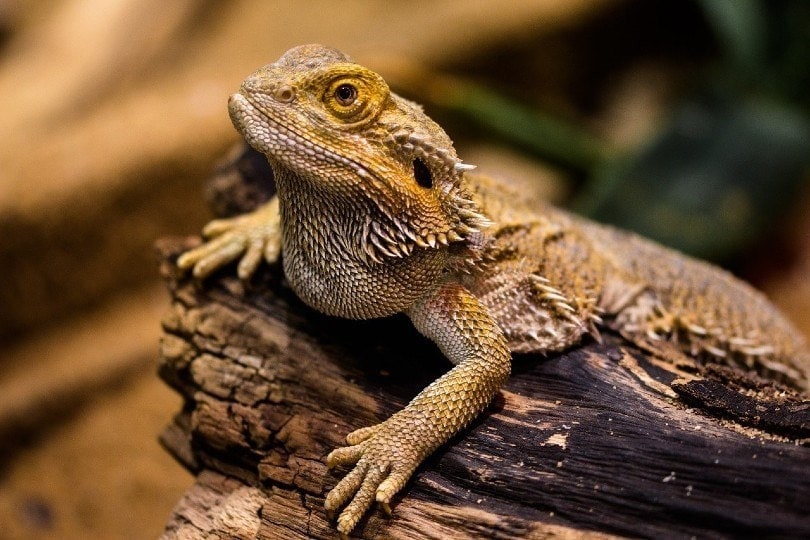
How Long After Mating Will Your Bearded Dragon Lay Eggs?
If you have a mating pair of dragons, it’s easy to guess when to expect eggs. That’s because female dragons lay eggs after four to six weeks of mating. The only thing you cannot assume is the pattern of laying eggs.
Incubation Period for Bearded Dragon Eggs
The incubation period for bearded dragons is 60 days, according to the Reptile Centre. However, it can take longer or shorter depending on the temperature and humidity of the enclosure.
If the temperature is too low, it will lengthen the incubation period. If not maintained well, it may lead to the death of the eggs.
On the other hand, high temperatures do not work well with high humidity. The high humidity will affect the eggs and delay hatching.
How Many Babies Do Bearded Dragons Have?
The number of babies a female bearded dragon hatches during one mating session varies. Some females lay 12 to 15 eggs in one clutch on the lower scale, while others lay an average of 30 eggs. On a maximum scale, the number of eggs can increase to 35 eggs per clutch.
If the eggs are fertile and hatch just fine, you will get twenty baby beardies from each clutch on average, according to the Reptile Guide.
The number of babies also depend on age, size, and health. Additionally, this number will vary from one bearded dragon to another.
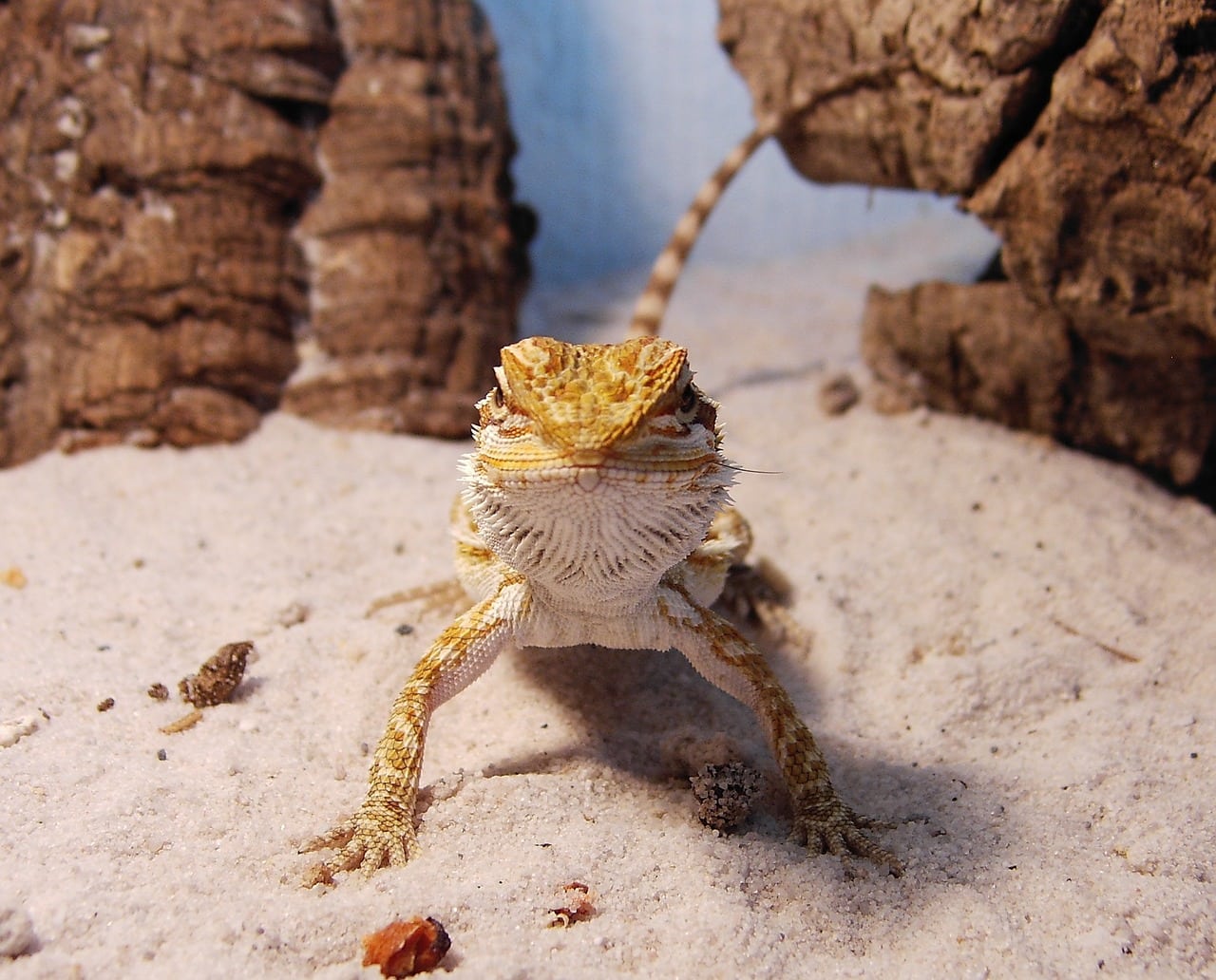
The Nesting Behavior of Bearded Dragons
Female dragons will start digging a hole as their belly grows. The hole can be 10 inches deep. At this point, you should step in and provide everything your dragon needs.
Start with a nesting box and place it in the enclosure with a bed where your dragon can lay eggs. Use a UVB light over the bedding to maintain optimal temperatures so the eggs will hatch with ease. If you don’t want to place the bedding in the enclosure, ensure the other position is hydrated enough and preheated.
A nesting box helps provide a safe and quiet place for your dragon to lay her eggs. Egg-laying time is a rather stressful time for them because they brumate. Any change to their environment might lead to stress and even death.
For that reason, we recommend consulting a vet and asking what you can do during that period. Keep yourself updated on the different stages bearded dragons go through during the reproduction stage.
Problems that Might Occur When Bearded Dragons Breed
When the dragons have young ones, they may neglect their own needs out of responsibility to raise them. In that case, ensure you provide your female dragon with proper care and nutrition after breeding.
 Conclusion: Breeding Bearded Dragons
Conclusion: Breeding Bearded Dragons
Breeding bearded dragons is a fun and rewarding experience. The entire process is well worth it if you take care of everything in time. It might be challenging at first because there is so much to learn, but you will get used to it.
Featured Image Credit: zoosnow, Pixabay

 How Often Do Bearded Dragons Lay Eggs?
How Often Do Bearded Dragons Lay Eggs?